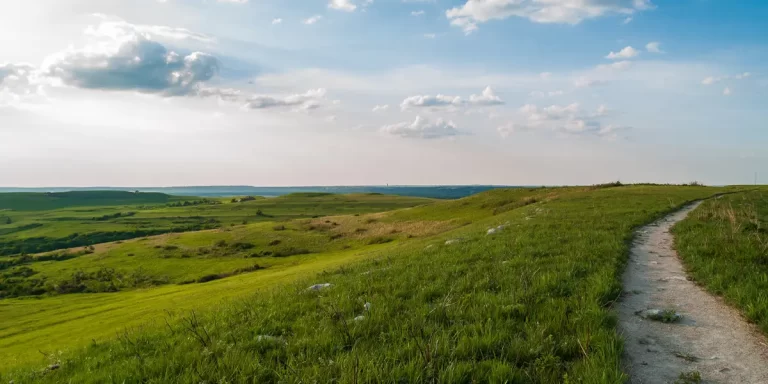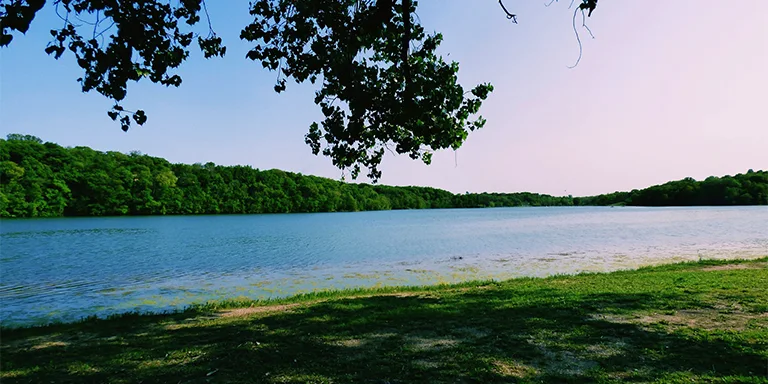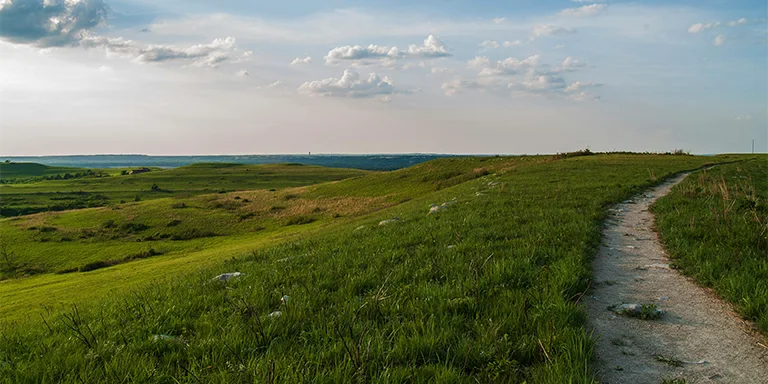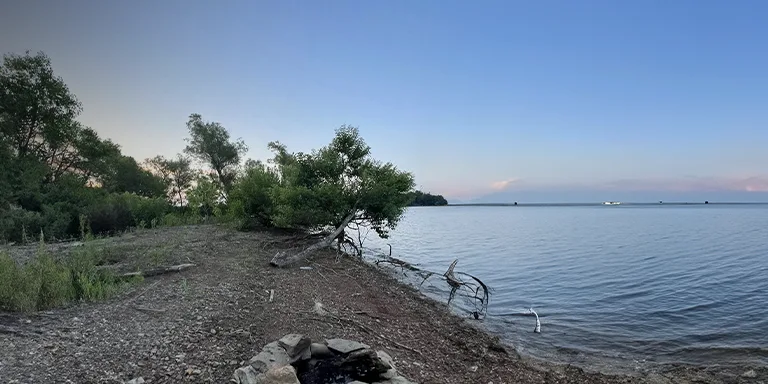

Backpacking in Kansas may not be the most renowned or sought-after destination, but it can offer a unique and rewarding experience for those willing to venture into the state’s understated natural beauty.
From the rolling tallgrass prairies to the rugged canyons and buttes of the Gypsum Hills, Kansas offers a range of backpacking adventures for hikers of all skill levels.
In this guide, we’ll share essential tips and the top 5 multi-day trails in Kansas, catering to both experienced backpackers and newcomers eager to explore the state’s underrated natural wonders.
Interested? Let’s get started.
Here are the best multi-day backpacking trails in Kansas:

Granger Meador, CC BY-SA 2.0, via flickr
Length: 26.5 mi / 42.6 km
Type: Point to point
Difficulty: Moderate
Elevation Gain: 977 ft / 298 m
Location: Elk City State Park
Estimated Hiking Calorie Burn: 3900 calories
More Details: See on AllTrails
This 15.3-mile moderately challenging point-to-point trail is popular for backpacking, birding, and camping, with primitive campsites every mile or so. Water sources are extremely limited, so carrying sufficient water is essential. The first 3 miles feature minor scrambling, then easing to moderate difficulty. Proper planning and ample water are essential to fully enjoy this point-to-point trek through nature’s beauty.

Laura Gilchrist, CC BY-SA 2.0, via flickr
Length: 10.4 mi / 16.7 km
Type: Loop
Difficulty: Moderate
Elevation Gain: 1322 ft / 403 m
Location: Wyandotte County Lake Park
Estimated Hiking Calorie Burn: 2200 calories
More Details: See on AllTrails
This 10.4-mile loop trail near Kansas City offers a moderately challenging hiking experience through diverse terrain. The popular route demands proper footwear, navigation skills, and provisions like bug spray as the leaf-covered, potentially muddy sections require caution. Despite occasional lack of clear markings, the varied terrain with elevation changes provides a nice experience.

Length: 73.1 mi / 117.6 km
Type: Point to point
Difficulty: Moderate
Elevation Gain: 1496 ft / 456 m
Location: Ottawa
Estimated Hiking Calorie Burn: 27 400 calories
More Details: See on AllTrails
This 73.1-mile point-to-point section of the Flint Hills Nature Trail offers a moderately challenging hike or bike through the tallgrass prairie of east-central Kansas. Part of a long rail-trail, it traverses the beautiful Flint Hills ecosystem on a packed gravel surface with gentle grades. While popular, it allows solitude at quieter times.

Length: 14.9 mi / 24 km
Type: Out and back
Difficulty: Moderate
Elevation Gain: 774 ft / 236 m
Location: Hundred and Ten Mile Recreation Area
Estimated Hiking Calorie Burn: 3800 calories
More Details: See on AllTrails
This 14.9-mile moderately challenging out-and-back trail system winds along the shores of Pomona Lake, offering a secluded escape for backpacking, birding, and fishing. The blue and orange trails allow creating loops like an 8-mile circuit. Despite being a hidden gem, the trails are generally well-marked but can get muddy. With water sources and scenic lakeside campsites available on this lightly-trafficked area, it provides a tranquil nature getaway close to home.

Length: 93.9 mi / 151.1 km
Type: Point to point
Difficulty: Moderate
Elevation Gain: 1804 ft / 550 m
Location: Osawatomie
Estimated Hiking Calorie Burn: 7800 calories
More Details: See on AllTrails
The Flint Hills Nature Trail is a 93.9-mile point-to-point hiking route traversing the tallgrass prairie of east-central Kansas. This moderately challenging trail has a packed gravel surface and passes through small towns, alongside rivers, bluffs, farmlands, and prairie wildlife. While immersing you in one of the last remaining tallgrass ecosystems, the lack of frequent campsites and water sources, combined with potentially monotonous terrain, may make it not suitable for everyone.
Kansas has a consistent climate, with distinct seasons:
The Flint and Smokey Hills regions generally have milder weather than western Kansas. Being flexible and ready for anything is key for backpacking in Kansas given the dynamic weather patterns.
Before making your gear selection, take a look at the weather statistics for Kansas (Tulsa):
| Jan | Feb | Mar | Apr | May | Jun | Jul | Aug | Sep | Oct | Nov | Dec | |
|---|---|---|---|---|---|---|---|---|---|---|---|---|
| High °F | 50 | 55 | 65 | 73 | 80 | 88 | 93 | 93 | 85 | 74 | 62 | 51 |
| Low °F | 30 | 34 | 43 | 52 | 61 | 70 | 74 | 72 | 64 | 53 | 42 | 33 |
| Rain/Snow (D*) | 6 | 7 | 9 | 9 | 11 | 9 | 7 | 7 | 8 | 8 | 7 | 7 |
Not sure if Kansas is right for you?
Don’t forget to check out our backpacking guides for Nebraska and Colorado.
When backpacking in Kansas, campfires are allowed but have some rules. You can only have fires in set-up fire rings or grates in specific camping areas within state parks, wildlife refuges, and public lands. Check for county burn bans when it’s dry. In some places, you might need to buy firewood or have restrictions on gathering it.
Tell someone you trust about your route and when you plan to be back in case of an emergency. Bring a map, compass, or GPS since cell service might be spotty. Keep an eye on the weather for possible thunderstorms and have extra clothes or shelter just in case. Bring more water than you think you’ll need and a way to purify it if necessary. Be careful around big animals, and be aware of rattlesnakes in some places. Always hike with a buddy or in a group to be safe. If you’re camping in a remote spot, make sure to secure your food properly to avoid attracting animals.
If you come across wildlife while backpacking in Kansas, follow these tips. Deer are common but usually stay away from humans. Stay calm and keep your distance. Coyotes might be alone or in packs but are generally not aggressive unless they feel threatened. Don’t feed or surround any wild animals. Be careful of snakes, like rattlesnakes, in drier areas, and be extra cautious with your hands and feet. If you see a bull bison, slowly back away and find another way, as they can charge if they feel threatened. Never approach wildlife, especially mothers with young. Carry bear spray just in case animals feel threatened.